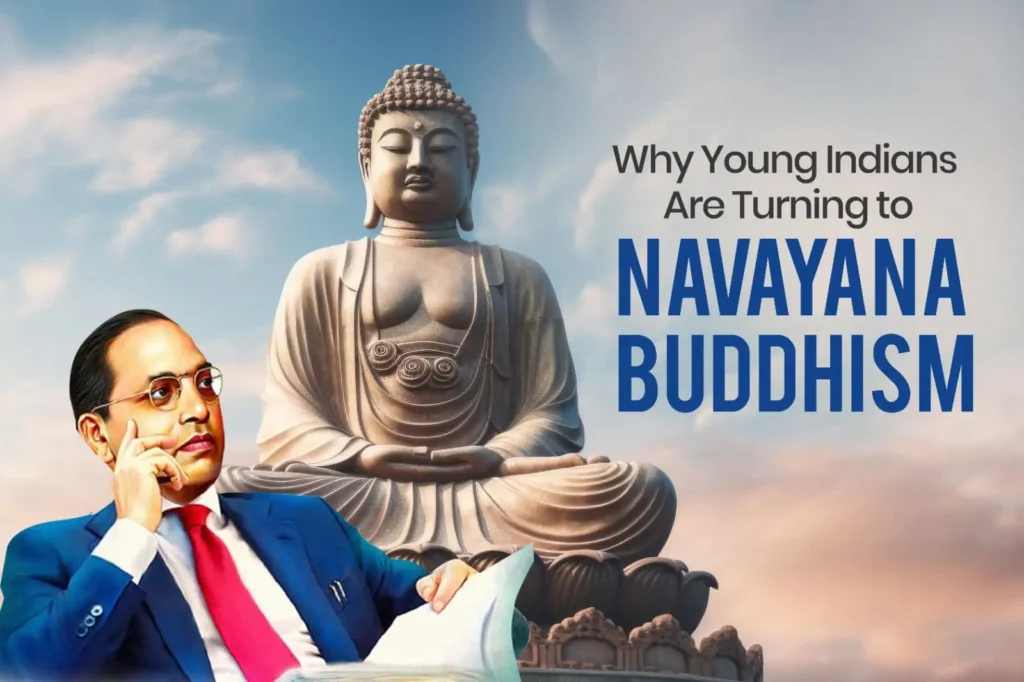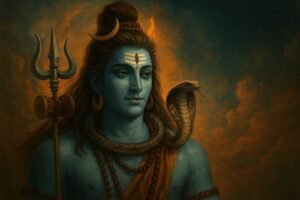Table of Contents
ToggleNavayana Buddhism means “New Vehicle.” It was started in 1956 by Dr. B.R. Ambedkar, a respected leader and the man who wrote India’s Constitution. He created this path of Buddhism because he wanted to help people, especially Dalits, break free from the caste system.
Unlike other types of Buddhism like Theravāda and Mahayana, Navayana is more focused on equality, human rights, and social justice than on prayer or spiritual rituals. It teaches people to live with dignity and treat others equally.
Why Are Young Indians Choosing Navayana Today?
- They Reject Caste Discrimination: Many young people don’t believe in caste differences. Navayana Buddhism stands for equality and respect for all no matter your birth, religion, or background.
- It Matches Modern Thinking: Navayana does not follow old superstitions. It encourages rational thinking, education, and action which appeals to educated youth today.
- It’s Inspired by Dr. Ambedkar: Dr. Ambedkar is a symbol of justice and change. His teachings still inspire today’s generation to fight for equal rights and fairness.
- It Builds a Supportive Community: People who follow Navayana often feel part of a big, welcoming family that works together for social change and upliftment.
- Its Teachings Are Global: Navayana talks about peace, kindness, and justice values that are important everywhere in the world today.
Listen: Navayana Buddhism – A New Path
Explore the rise of Navayana Buddhism through our podcast episode. Learn how B. R. Ambedkar redefined Buddhist teachings to promote social justice, equality, and a new spiritual vision for modern India.
Challenges & Criticism of Navayana Buddhism
Even though Navayana Buddhism is growing in popularity among young Indians, especially those seeking equality and social change, it also faces some challenges and criticism, such as:
1. Not Focused on Spiritual Beliefs
Unlike traditional Buddhism, Navayana does not focus much on spiritual ideas like karma, rebirth, or meditation. Critics say it’s more like a social reform movement than a spiritual path.
2. Too Different from Traditional Buddhism
Some Buddhist scholars argue that Navayana changes too many core teachings of Buddha. For example, it rejects the Four Noble Truths and Eightfold Path as they are understood in Theravāda or Mahayana traditions.
3. Seen More as Political or Social Movement
Many people see Navayana more as a way to fight caste discrimination and inequality, rather than a religious path. This has caused debate about whether it should be called Buddhism at all.
4. Lack of Awareness and Education
This is a practical challenge. Despite its growth, Navayana is still relatively young in its current form and its reach, while significant among certain communities, is not as widespread or well-understood across the general Indian population compared to older religious traditions. More educational initiatives and media engagement would indeed help in a broader understanding.
5. Limited Spiritual Guidance
Since Navayana does not have many monks or spiritual teachers like other Buddhist paths, followers sometimes feel lost when it comes to meditation or inner growth.
Core Practices of Navayana Buddhism
Unlike traditional Buddhism, Navayana focuses less on spiritual rituals and more on ethical living and social action. Some core practices include:
The 22 Vows
Given by Dr. Ambedkar during the 1956 conversion, these vows reject Hindu gods, caste practices, and affirm commitment to Buddha’s teachings, equality, and reason. Examples include:
- I will not put my faith in Brahma, Vishnu, or Shiva.
- I shall not perform Shraddha or Pind-daan.
- I believe that every human being is equal, no matter who they are.
- Should live by the eight right ways taught by the Buddha.
The Noble Eightfold Path
While Navayana offers a modern interpretation, its followers continue to live by core principles that guide a meaningful and ethical life:
- Right View
- Right Thought
- Right Speech
- Right Action
- Right Livelihood
- Right Effort
- Right Mindfulness
- Right Concentration
But instead of focusing only on spiritual awakening, Navayana links these principles to social justice and real-world equality.
Study and Self-Education
Followers are encouraged to read Ambedkar’s writings, the Dhammapada, and modern literature to gain wisdom. Knowledge is power, and Navayana teaches that education leads to liberation.
Community Service and Activism
Practicing Navayana also means helping others especially marginalized people. Many followers join groups that fight for rights, education, and equality in society.
Conclusion
Navayana Buddhism is not just about faith it’s about fighting inequality, uplifting the oppressed, and living with purpose and compassion. It redefines traditional Buddhism by focusing on justice, rational thinking, and human dignity making it especially meaningful for today’s youth in India and beyond.
As more people search for spiritual systems that align with modern values, Navayana Buddhism stands out as a bold and relevant choice offering both personal growth and social transformation. Want to explore more insightful blogs on Buddhism, self-awareness, and mindful living?
Visit our website at HiddenMantra for detailed content, tips, and guidance on your journey.
FAQ
Is Navayana different from traditional schools like Theravāda or Mahāyāna?
Yes, it is different.
Theravāda and Mahāyāna are traditional forms of Buddhism that focus on meditation, karma, rebirth, and spiritual practices.
But Navayana, created by Dr. B.R. Ambedkar, is a modern version of Buddhism. It removes belief in rebirth, karma as fate, and rituals, and focuses more on equality, justice, and ending caste discrimination.
Is conversion to Navayana Buddhism a religious or social act?
It is mostly a social and political act.
Dr. Ambedkar encouraged conversion so Dalits could escape caste oppression peacefully.
Converting means choosing a life of self-respect, equality, and justice, based on Buddha’s teachings.It’s also spiritual, but the main goal is social change.
Where is Navayana Buddhism most commonly practiced?
It is mainly followed in India, especially in:
Maharashtra
Madhya Pradesh
Uttar Pradesh
Chhattisgarh
Tamil Nadu
Many Dalit communities and Ambedkar followers also practice it in Nepal and in some cities outside India.








